6 Ways to improve your singles badminton fitness
What are you doing to become physically stronger in your singles matches?
How can you develop your badminton singles fitness so it will make a difference in matches?
There 6 suggestions will give you ideas about how to improve your badminton fitness, measure it and enjoy the results
Don’t forget to read the warning at the end!
– – – – – – – – – – – – – – – – – –
1 Play singles!
2 Use Conditioned Games
3 Run or Spin ?
4 Have you tried 2 v 1
5 Take your time
6 Measure it … but how?
Advice from Badminton Insight
– – – – – – – – – – – – – – – –
1) Play singles!
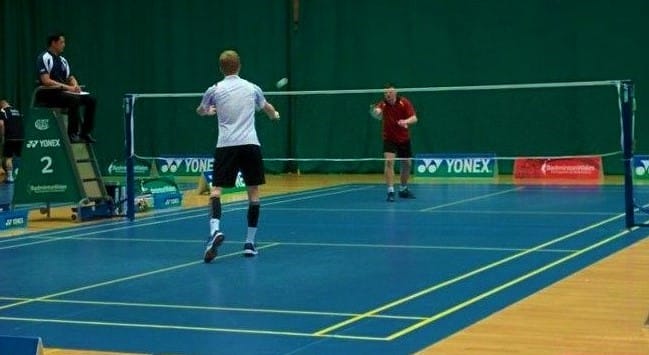 If you want to improve your singles fitness then play singles!
If you want to improve your singles fitness then play singles!
Lots of singles
Play at least twice a week for 45 – 90 minutes. If you can find 2 or 3 others who want to play matches with you then all the better. Book 1 or 2 courts and rotate between yourselves.
Playing singles matches in practice is very important. Enjoy the feeling of competition and testing yourself, your fitness especially. The fitter you are, the more you will be able to use your technical skills and be able to push your opponent.
Try and find others who are close to your ability or a little better. The key is finding motivated players. Having 1 player sitting out between matches will keep up the intensity. They can always use the break to skip or do some body conditioning if they want to.
– – – – – – – – – – – – – – – –
2) Conditioned Games
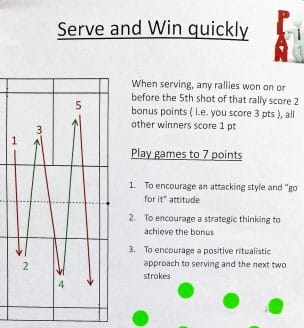 Using conditioned games will not only spice up the competition but they can also target different fitness components.
Using conditioned games will not only spice up the competition but they can also target different fitness components.
To improve your fitness, you may like to try these 3 games:
- Co-operation singles
- 5 shot winners bonus
- outright winners’
Each game replicates a match situation so there is plenty of competition. Both players need to agree to play within certain parameters (rules) and to be fully engaged with the condition.
By having an idea of what is going to happen in the rally it often allows players to relax a little and focus their attention. Hopefully, you won’t be as influenced by outside factors and be able to give your all to these physical games. It not about who wins, but who tries the hardest.
Each of the three games will target different aspects of singles fitness
Game 1 : Co-operation singles
Each player tries to ensure that they hit inside the lines. They play to within 70-85% of their opponents capability. Trying to keep the rally going but still making it a game of singles.
The aim is to hurt your opponents by lengthening the rallies
This game will create longer rallies and will test the technically proficient players to the maximum.
- There are no BIG smashes or outright winners
- No very tight nets
- Deception is kept to a minimum
- Be prepared to work hard as the rallies will be much longer than you are used to
Game 2 : The 5 shot winners bonus
If either player hits a winner before the 5th shot of the rally they score 2 points
The 2pts apply only to winners, not errors
You must decide if the rally ended with a winner (2pts), forced error (2pts) or error (1pt)
This game can encourage fast explosive play with shorter rallies. Be prepared to work hard in short bursts.
Game 3 : Outright winners!
If either player hit the court with a winner they score 3 points 🙂
This game will ensure that you are always trying to reach the shuttle. Diving is permitted !!
It will also encourage you to still try for winners even if you are losing. This game can deliver unexpected levels of excitement as the score swings widely and swings. It will increase your stress levels.
Be prepared to chase everything and stop that shuttle hitting the court.
– – – – – – – – – – – – – – – –
3) Run or Spin
 Training off court will certainly help your fitness. Do you prefer running or spinning (stationary cycling)?
Training off court will certainly help your fitness. Do you prefer running or spinning (stationary cycling)?
Both will raise your level of exertion if you are motivated to push yourself.
Whichever you choose, ensure that the intensity is high. That means working at between 70-90% of your maximum effort for periods no longer than 30 seconds.
The times at ‘rest’ or partial recovery in between is up to you. Try to keep it at least 50-60% effort.
As you develop and feel stronger, then increase the workload. Keep to short work periods but push harder. You can always either reduce the recovery time or work slightly harder whilst at rest. This aspect is in your control. I would prefer you to experiment than be told.
I recommend that whatever off court training you choose, you think about using the RPE scale.
Take a look at this post 6 Ways to avoid common training mistakes it contains information about the RPE scale
– – – – – – – – – – – – – – – –
4) 2 v 1
If you like to be on court and working on your badminton fitness then maybe this could be your preferred choice.
It can certainly be a tough way to train. Playing against 2 people isn’t easy if you are not proficient in movements and strokes.
You may find that it hurts very quickly and rallies break down. Also, there isn’t much rest. This may sound like an advantage but the amount of work you do could be far less than just playing matches or going for a run.
However, if you can cope with full-court movement and are able to retrieve the shuttle from all parts then try 2v1. Discuss with your partners what style of game you want to play.
As with the conditioned games, there are a few different themes that you could choose.
– – – – – – – – – – – – – – – –
5) Take your time and grow strong
If your mission is to improve the physical side of your game then it will take time. Maybe time than to improve your backhand overhead. The development journey is different for physical and technical aspects. Don’t expect to see improvements in 3 sessions.
It’s about doing things on a regular basis and suspending your immediate judgement. Let the improvements come over time. If you are working to a plan then trust it. Try to include elements of weight training as well as those pulse-raising sessions.
Work on developing stronger legs for your lunges and jumping. Work on your flexibility combined with strength.
Don’t forget your shoulders and especially your throwing arm

– – – – – – – – – – – – – – – –
6) Measure it
 How will you know that your badminton fitness is increasing?
How will you know that your badminton fitness is increasing?
What is fitness and how should it be measured?
These questions have confused me for years. I have seen people use the Bleep Test (20m shuttle run), the Yo-Yo Test (20m shuttle run with intervals if rest), plus being tested in a laboratory.
Whichever method you use, it’s the progression that matters, not the score
There are techniques to achieving a good level at each of these tests. Improve your turns with a hard push off. Get used to pushing hard after the turns. Be prepared to feel uncomfortable, remember it’s a test to ‘failure’ so don’t fear the test. Everybody stops eventually!
To achieve a Bleep Test score of between 10-11, try running to level 8 in the warm up 3 times a week
To improve your sprint endurance start the Bleep Test at level 9 and run one leg, then wait (rest), missing the next leg. Continue running and missing every other leg (resting) until you can’t run anymore. It’s a great way to see if you can sprint one leg at level 15 ! Please let me know how you do.
Can’t get above level 9 … is that You ?
If you really hate or fear these tests and can’t get above say, level 9 on the Bleep, then remember this.
Most players become anxious and stressed and then stop. Is this you? Try this method with the agreement of your coach.
Just as you think you are going to stop ask for a marker to be placed reducing each leg by 50cm at both ends. Continue running alongside the others for as long as you can. Over time it will make a difference. It’s better than stopping and sitting on the bench then feeling fine only 2 minutes later!
The bleep and Yo-Yo test are really a measure of the change in performance than a true fitness test.
It’s easy to see if you are improving. If you are, you should feel different, especially during the middle of the test. I’d encourage you to keep talking to yourself and use any positive feelings during this phase to boost yourself towards the end.
Self-talk can often get you at least another half a level
– – – – – – – – – – – – – – – –
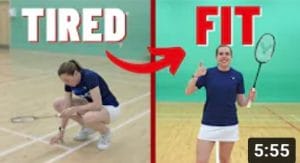
Great advice from Badminton Insight
– – – – – – – – – – – – – – – –
Warning
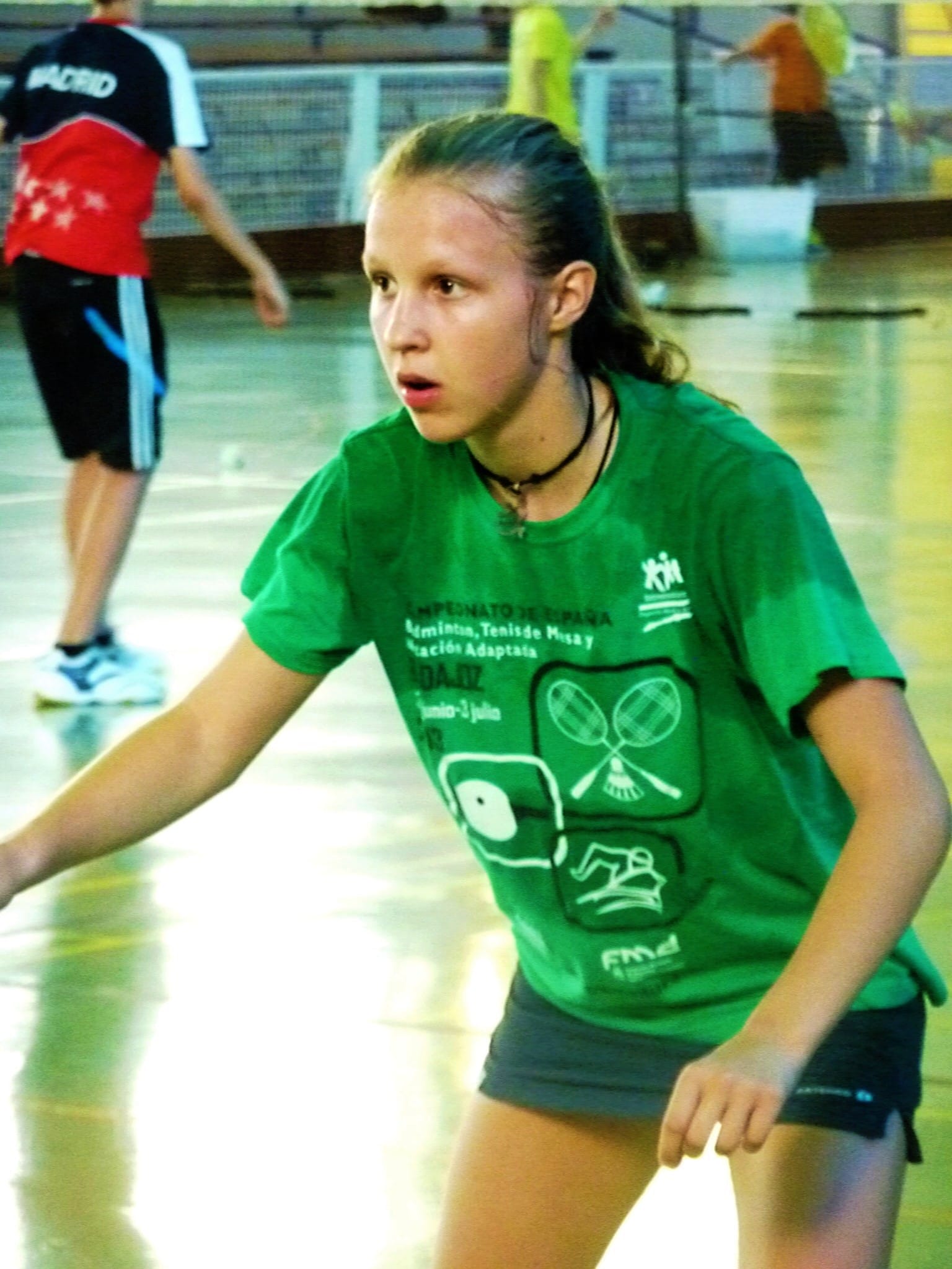 A word of warning! The secret to badminton fitness is ensuring it helps on court.
A word of warning! The secret to badminton fitness is ensuring it helps on court.
The ability to run a great bleep or Yo-Yo test may not help you maintain good form in singles when you feel tired. Be aware that being physically tried will initially stress your internal co-ordination systems. You may start to make ‘easy/simple’ mistakes. Please don’t just dismiss this.
Badminton fitness needs to be used (measured) on the court with badminton movements and badminton strokes in a match. Prepare off court, yes, but complete the process on court.

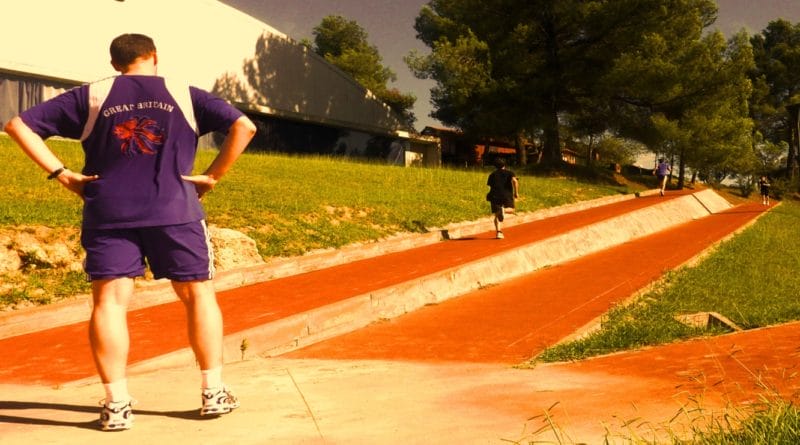
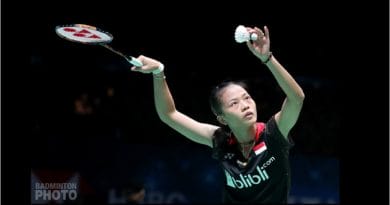
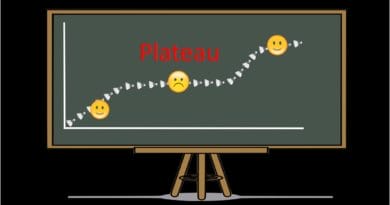
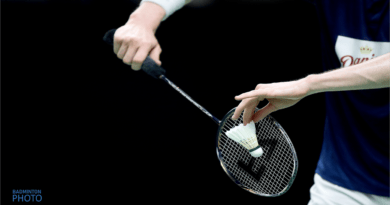
You can combine on court physical work and work under fatigue,like skipping and lunges. Then have practices hitting the shuttle.
I love your website, it has interesting information, Thank you!